|
Snowflake Touring -- Michigan Upper Peninsula |
|
  The Michigan Upper Peninsula is widely known for getting great
quantities of snow, so I had to visit to check out the crystals.
My base was the town of Houghton, in the middle of the Keewenaw
peninsula (see map).
The Michigan Upper Peninsula is widely known for getting great
quantities of snow, so I had to visit to check out the crystals.
My base was the town of Houghton, in the middle of the Keewenaw
peninsula (see map).
|
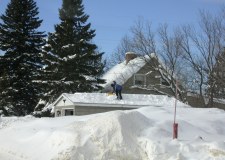 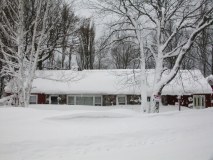 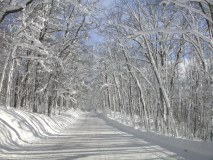
|
Snow is certainly in
good supply in and around Houghton in January. On average it snows
about an inch per day. If you thought shoveling your driveway was
bad, consider the fellow in the first picture above -- he starts with
the roof and works his way down!
|
 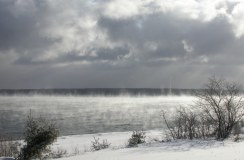 The source of all the snow is Lake Superior, which surrounds the
Keewenaw peninsula. The lake almost never freezes over, and vapor
steams off the water's surface when the temperature is low (first
picture at right). (The second picture shows a bald eagle I found
overlooking the lake.)
The source of all the snow is Lake Superior, which surrounds the
Keewenaw peninsula. The lake almost never freezes over, and vapor
steams off the water's surface when the temperature is low (first
picture at right). (The second picture shows a bald eagle I found
overlooking the lake.)
The wind picks up all this moisture over the lake and it doesn't
usually travel far. It turns into snow and covers the Upper
Peninsula.
|
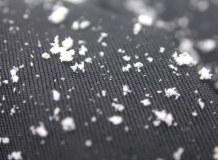 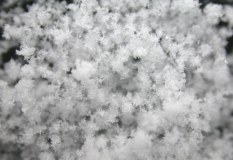 Alas, quantity does not equal quality. Most of the falling snow
consists of small, granular crystals, seen in the pictures at right.
I spent many a day watching this stuff fall, not even bothering to get
out my camera.
Alas, quantity does not equal quality. Most of the falling snow
consists of small, granular crystals, seen in the pictures at right.
I spent many a day watching this stuff fall, not even bothering to get
out my camera.
|
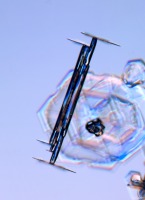  The snow wasn't all grainy junk, however. One day I found these
most amazing capped columns, shown at left. They might be more
appropriately called capped needles, since each is a good-sized needle
capped with extraordinarily thin plates. (See the
Guide to Snowflakes for more about the different kinds of crystals.)
The snow wasn't all grainy junk, however. One day I found these
most amazing capped columns, shown at left. They might be more
appropriately called capped needles, since each is a good-sized needle
capped with extraordinarily thin plates. (See the
Guide to Snowflakes for more about the different kinds of crystals.)
These are quite unusual crystals -- I haven't seen anything quite
like them before or since.
|
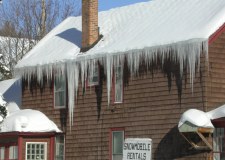
A good crop of icicles is a rare
sight these days. They form when heat from the house melts the
snow on the roof, so water drips down and refreezes. With energy
costs high, most people insulate their attics so well that big icicles
are mostly a thing of the past.
|
